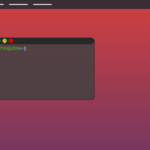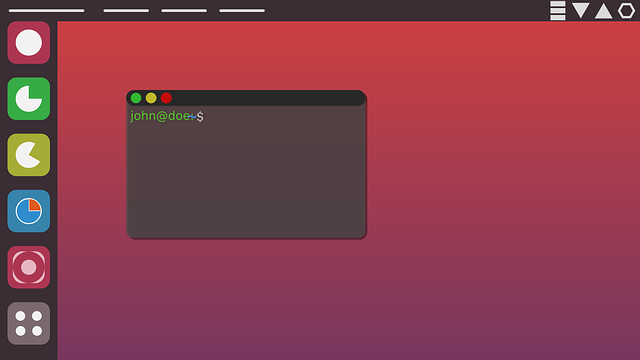AntiX Linux sets itself apart by offering robust support for advanced file systems like Btrfs and ZFS, which provide users with powerful tools for data management. Btrfs integration delivers snapshotting capabilities for precise restoration of files to any point in time, making it ideal for handling large datasets or supporting development and testing environments. The distribution also supports ZFS, known for its extensive dataset checksumming, deduplication, and compression features, which optimize storage space while maintaining data integrity. These features ensure data integrity and streamline organization with hierarchical subvolume management. AntiX Linux's adoption of F2FS tailors the system specifically for flash storage, intelligently managing data to extend the life of flash memory and maintain consistent performance. This makes AntiX Linux a top choice for users who prioritize efficient, reliable data handling and performance optimization on solid-state drives.
AntiX Linux emerges as a robust platform for users seeking sophisticated file system management. This article delves into the latest advancements in file systems, focusing on Btrfs, ZFS, and F2FS within the AntiX environment. Each file system offers unique capabilities for data organization and performance optimization. Users will discover how to harness these tools to enhance data integrity, storage efficiency, and retrieval speed, particularly on flash storage devices. Join us as we explore the intricacies of these modern file systems and their applications in AntiX Linux, ensuring an informed approach to data management.
- Exploring the Capabilities of Btrfs in AntiX Linux for Efficient Data Management
- Leveraging ZFS Features in AntiX Linux to Optimize File System Performance
- Implementing and Utilizing F2FS for Flash Storage in AntiX Linux Environments
Exploring the Capabilities of Btrfs in AntiX Linux for Efficient Data Management

Antix Linux stands out among other Linux distributions with its robust support for Btrfs, a cutting-edge file system that brings a suite of advanced features for efficient data management. Btrfs, which is included in the kernel of Antix and many other modern distributions, offers users a versatile toolset for handling their data with precision. The file system’s snapshotting capabilities allow for the creation of consistent points-in-time, enabling users to restore files from any given moment without the need for cumbersome backup strategies. This feature is particularly valuable for users who work with large datasets or who require a stable environment for development and testing.
Furthermore, Btrfs in Antix Linux facilitates file system checks, copy-on-write cloning, and subvolume management, all of which contribute to data integrity and organization. The subvolume feature allows users to create and manage multiple hierarchical levels of filesystems within a single Btrfs volume. This subvolume concept is instrumental in isolating data for different projects or applications, making it easier to manage and control access, snapshots, and space utilization. With Btrfs, Antix Linux offers a reliable and user-friendly experience for those seeking to harness the full potential of their storage systems for optimal data organization.
Leveraging ZFS Features in AntiX Linux to Optimize File System Performance

Antix Linux stands out among Linux distributions for its robustness and versatility, particularly with its integration of ZFS, a sophisticated file system that offers advanced features for data management and optimization of file system performance. ZFS, developed by Oracle, is renowned for its high-performance storage systems, comprehensive dataset checksumming to detect corruptions, and its capability to provide deduplication and compression services, which can significantly reduce storage requirements without compromising on data integrity. In AntiX Linux, users can harness these ZFS features to create file systems that are not only efficient in terms of space usage but also resilient against data corruption and loss. The inclusion of ZFS’s copy-on-write snapshots allows for reliable backup solutions within the AntiX environment, enabling users to maintain critical data without disrupting ongoing operations. This feature is particularly beneficial for system administrators who require a stable and dependable system for their archival and operational needs. Moreover, ZFS’s ability to handle large files and directories with ease makes it an ideal solution for managing big data applications on AntiX Linux. The file system’s built-in protection mechanisms also ensure that data is protected from silent data corruption, which can be a silent threat to data integrity over time. By leveraging ZFS in AntiX Linux, users can optimize their file system performance and reliability, ensuring that their data management tasks are carried out with the highest level of efficiency and security.
Implementing and Utilizing F2FS for Flash Storage in AntiX Linux Environments

AntiX Linux stands out as a robust and versatile distribution, offering users an efficient computing experience, particularly on systems with flash storage. One of the file systems that can be implemented in AntiX to optimize performance on such storage is F2FS, or Flash-Friendly File System. Designed specifically for flash memory, F2FS leverages the unique characteristics of this storage type to enhance data integrity and improve read/write speeds. The implementation of F2FS in AntiX Linux environments is facilitated by its inclusion in the distribution’s repositories, making it accessible through the package manager. This allows users to effortlessly install and utilize F2FS without the need for complex manual operations.
Upon installation, F2FS within AntiX Linux can be set up to manage flash partitions efficiently. It organizes data in a way that minimizes wear on the storage medium by grouping frequently accessed files together and placing less often accessed files elsewhere. This not only extends the lifespan of the flash storage but also ensures that performance remains consistent over time. Users can take advantage of F2FS’s advanced features, such as erase block management and garbage collection algorithms, to maintain optimal file system performance. The integration of F2FS in AntiX Linux is a testament to the distribution’s commitment to providing users with cutting-edge tools for efficient data organization on flash storage devices.
AntiX Linux emerges as a robust platform for users and professionals alike who seek advanced file systems tailored for efficient data organization. This exploration has highlighted the capabilities of Btrfs, which offers snapshotting, RAID-like features, and excellent data integrity checks within AntiX Linux. Similarly, ZFS’s comprehensive datasets, high-performance compression, and robust protection against data corruption stand out as significant assets in managing large datasets effectively. Furthermore, F2FS’s design for flash storage has demonstrated remarkable performance enhancements in AntiX environments, particularly on solid-state drives. Each of these file systems contributes to the overarching goal of optimizing file system operations, making AntiX Linux a compelling choice for those looking to leverage modern data management tools. Users and IT administrators can confidently integrate these systems into their workflows, knowing they have chosen a versatile and future-proof solution with AntiX Linux.


























